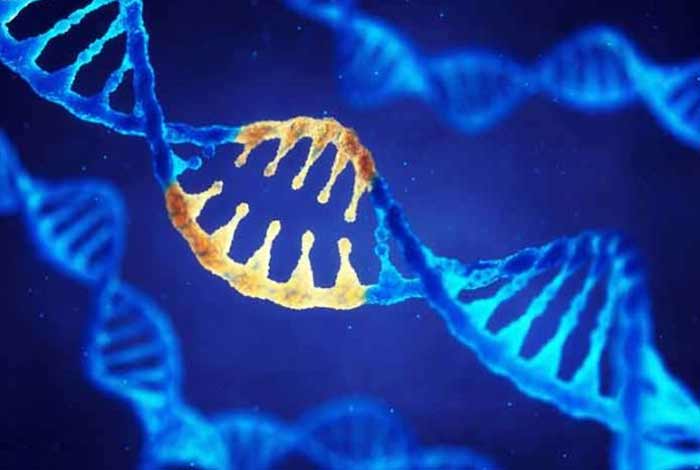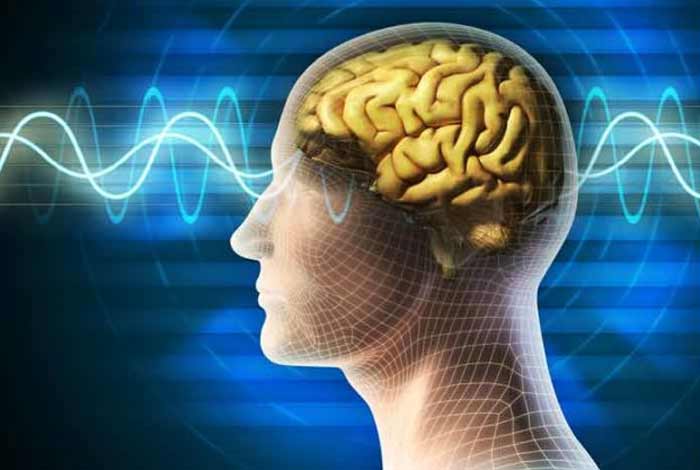
Overview and Facts
Alpers disease is a condition in which there is depletion of mitochondrial DNA. This results in the degeneration of central nervous system (CNS), especially gray matter. It is a progressive neurological disorder, which starts during childhood and is complicated by serious liver disease. It has several names like Alpers-Huttenlocher Syndrome (AHS), Alpers Syndrome, progressive sclerosing poliodystrophy and progressive infantile poliodystrophy.
In this disease, the depletion of mitochondrial DNA happens due to mutation in the mitochondrial DNA polymerase POLG gene. It is marked by dementia, liver disease, and frequent and continuous seizures. These symptoms appear much later than the actual onset of Alpers disease, i.e., in weeks or years. Progression of Alpers’ disease gradually leads to inability in performing routine tasks like sitting, walking and eating.
Alpers disease occurs mainly due to inheritance of autosomal recessive traits from carrier parents. The risk of having the disease from the parents is 25%. Alpers disease has an incidence rate of 4%. In about 80% of people affected by this condition, the symptoms develop within two years, while for the remaining 20% population, the symptoms gradually develop up to the age of 25.
The outlook of Alpers is not very good as the survival rate of the disease is from a few months to a couple of years after the start of the disease. The common reasons for the death of the person are because of seizures, cardiomyopathy and liver failure.
Alpers disease is present from birth. The symptoms of the condition arise from birth up to the age of 25 years. Males and females are equally affected by this condition. Individuals with Alpers’ syndrome can survive anywhere from a few months to more than 10 years after the symptoms have been noticed. Medication and therapies are beneficial in keeping the symptoms under control.
It is one of the most intense conditions in a group of conditions, called the POLG-related disorders. It becomes apparent in the children belonging to the age group of 2-4. People with Alpers have characteristic features of recurrent seizures, which do not improve with treatment, loss of mental ability and physical movement, and liver disease.
People with Alpers have problems in maintaining balance and performing activities that involve coordination. They also face disturbance in nerve function, i.e., neuropathy. It can lead to areflexia, which is absent or abnormal reflexes. Also, affected individuals may have weak muscle tone (hypotonia). Affected individuals may also exhibit brain-related symptoms. Migraines with visual perceptions and auras are common. Furthermore, people with this condition have decreased brain function with signs and symptoms like sleepiness, not being able to concentrate, loss of memory and inability to speak properly. These people may also have vision and hearing problems.
Alpers disease is inherited as autosomal recessive pattern, which implies that both copies of the gene in each cell (father and mother) has mutation. Each parent of the person with autosomal recessive condition carries one copy of the mutated gene.
The condition was first described by Dr. Bernard Alpers, a pathologist, in 1931. Dr. Peter Huttenlocher, in 1976, described characteristic clinical and pathological features of Alpers Disease.
It is a rare condition that affects young children (6 months to 3 years), but sometimes, it is also seen in young adults as severe epilepsy and liver disease due to defect in the same gene that causes Alpers. Generally, an infant initially develops normally and acquires skills, but as soon as the baby turns a year old, seizures start to appear that are uncontrollable. Seizures may be generalized, where all parts of the body jerk or focal – when only a specific body part jerks repeatedly. The jerks in the limbs are known as myoclonic jerks.
Symptoms of Alpers Disease
Common symptoms of Alpers disease are listed below:
- It is characterized by seizures at any age; between 5 months to 3 years
- Lack of coordination of motor movement
- Muscle twitching
- Partial paralysis
- Stiffness in limbs
- Abnormal muscle tone (hypotonia)
- Changes in density of the gray matter
- Chance of liver damage. Other liver-related problems like jaundice and cirrhosis
- Mental retardation
- Loss of cognitive functions like thinking, hearing and memory that might impair normal functioning
- Loss of control over movements of arms and legs; known as spastic quadriplegia.
- Degeneration of optic nerves leading to blindness in some cases.
- Headaches
- Speech abnormalities
- Irritability

Risk Factors for Alpers Disease
It is a genetic disorder acquired in an autosomal recessive pattern. This means mutations must be inherited from both the parents for the disease to manifest itself.
If the individual inherits only one copy of the mutated gene, then he/she would only be a carrier of the disorder without showing any signs of the disorder.
Age is another risk factor. It generally happens in children under the age of three. However, it can even manifest itself in young adults.

Do I have Alpers Disease?
There are some other disorders, whose symptoms are similar to Alpers disease. It is important to compare these so that the diagnosis can be made properly:
Myoclonic Epilepsy:
It is a genetic, neurological disorder, in which the muscles contract. It is present from the age of 6 to 16. If left untreated, it may lead to dementia.
Leigh’s disease is marked by lesions of the brain, optic nerve and spinal cord. It is diagnosed during infancy, but the symptoms may start to appear later. Symptoms may include low weight, slow growth, tremors and changes in breathing pattern.
Wernicke Encephalopathy:
It is a brain disorder marked by the deficiency of thiamine. It is characterized by loss of apathy and coordination. Vision disorders may also develop. This disorder can be life-threatening if not treated on time.
Batten Disease:
It is a lipid storage disorder, which is marked by vision failure, seizures, loss of muscular coordination,
Tay Sachs is a disorder in children that causes degeneration of the CNS. Infants with this condition appear normal at birth and develop normally up to the age of six months. The signs may include loss of vision, slow development, weakness and restlessness.

Causes and Prevention of Alpers Disease
Causes of Alpers Disease:
Alpers disease is caused by mutations in the POLG polymerase gene. This polymerase gene helps in the production of mitochondrial DNA.
Mitochondria is important for production of energy in the cells. These are a primary source of energy in the body’s cells. They are also essential in maintaining healthy brain tissue. Mutation in the POLG polymerase gene results in decreased mitochondrial DNA.
This leads to progressive degeneration of gray matter in the brain. Seizures and liver disease occur due to decrease of cellular energy because of the loss of mitochondria.
Some researchers feel that the disorder can be attributed to prion – an infectious agent wholly made up of protein – or non-prion molecule. The disorder may result due to combination of environmental factors and genetic predisposition for the disorder. Research also suggests that certain metabolic defects or mitochondrial abnormalities may play a role in causing the disorder.

Prevention of Alpers Disease:
Prevention methods can be adopted on the basis of symptoms. Take medicines as prescribed by the doctor. Get plenty of sleep. Avoid drugs and alcohol. Eat a healthy diet.
Diagnosis and Tests of Alpers Disease
Alpers syndrome is diagnosed in childhood and infancy, based on clinical evaluation and history of the patient and also, by employing various clinical tests. These tests may include imaging studies of the brain, which show degeneration of the brain’s outer portion and other areas.
Electroencephalography, which records brain’s electrical impulses, may show slowing down of brain’s electrical activity. During the later stages of the disease, conducting liver biopsy –examining a piece of liver – may be helpful. A blood test examining the POLG mutation can confirm the diagnosis.
Some common diagnostic tests for Alpers disease are:
- Evaluation of function of liver showing elevation of transaminase enzymes
- POLG DNA testing can be used to confirm presence of Alpers disease
- Cerebrospinal fluid examination can help show elevated levels of proteins and lactase.

Treatment and Care of Alpers Disease
So far, there is no treatment to stop the disease. But, the symptoms are manageable. While prescription drugs can be administered to reduce the occurrence of the seizures, it is impossible to completely control them. Therefore, the goal of the treatment is to treat the convulsions without medicating beyond limit and causing side effects. If required, sedative drugs for pain relief can be given for muscle spasms, and infections can be treated with antibiotics.
Counseling and educating the family is important. There are options like gastrostomy feeding tubes as well as non-invasive and invasive ventilation techniques. Physical and speech therapy are considered to minimize neural disabilities. Gastric feeding tube can help in providing nutrition. Anticonvulsants can be prescribed to control seizures.
It is better to use one drug to control epilepsy, but it is not possible due to reoccurring and intense nature of seizures. Use of multiple anticonvulsants may increase sedation and also elevates the risk of aspiration pneumonia. Infections, fever and dehydration can worsen a patient’s condition, and thus, must be treated immediately.

OTC Medication and Self-Management Methods for Alpers Disease
A person with Alpers disease can use herbal treatments like making fine powder of the roots of herbs like Ahyranthes aspera. Mix one part of its powder with one crushed black pepper or a teaspoon of milk. This can be used as nasal drops in case of partial paralysis. For proper functioning of muscles, physiotherapy sessions can be taken.
Health Tip by Expert
Over medicating a person with Alpers is not a good idea for the treatment of convulsions as the medicines have their own side effects.




